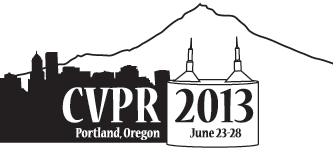-
Rolling Riemannian Manifolds to Solve the Multi-class Classification Problem
AbstractIn the past few years there has been a growing interest on geometric frameworks to learn supervised classification models on Riemannian manifolds [31, 27]. A popular framework, valid over any Riemannian manifold, was proposed in [31] for binary classification. Once moving from binary to multi-class classification this paradigm is not valid anymore, due to the spread of multiple positive classes on the manifold [27]. It is then natural to ask whether the multi-class paradigm could be extended to operate on a large class of Riemannian manifolds. We propose a mathematically well-founded classification paradigm that allows to extend the work in [31] to multi-class models, taking into account the structure of the space. The idea is to project all the data from the manifold onto an affine tangent space at a particular point. To mitigate the distortion induced by local diffeomorphisms, we introduce for the first time in the computer vision community a well-founded mathematical concept, so-called Rolling map [21, 16]. The novelty in this alternate school of thought is that the manifold will be firstly rolled (without slipping or twisting) as a rigid body, then the given data is unwrapped onto the affine tangent space, where the classification is performed.
Related Material
[pdf][bibtex]@InProceedings{Caseiro_2013_CVPR,
author = {Caseiro, Rui and Martins, Pedro and Henriques, Joao F. and Silva Leite, Fatima and Batista, Jorge},
title = {Rolling Riemannian Manifolds to Solve the Multi-class Classification Problem},
booktitle = {Proceedings of the IEEE Conference on Computer Vision and Pattern Recognition (CVPR)},
month = {June},
year = {2013}
}
These CVPR 2013 papers are the Open Access versions, provided by the Computer Vision Foundation.
Except for the watermark, they are identical to the accepted versions; the final published version of the proceedings is available on IEEE Xplore.
Except for the watermark, they are identical to the accepted versions; the final published version of the proceedings is available on IEEE Xplore.
This material is presented to ensure timely dissemination of scholarly and technical work.
Copyright and all rights therein are retained by authors or by other copyright holders.
All persons copying this information are expected to adhere to the terms and constraints invoked by each author's copyright.

